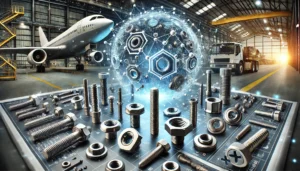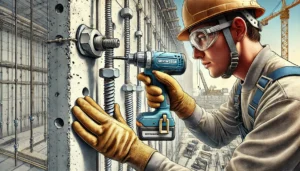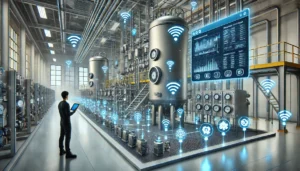Maximization of economic profit is the main goal of industrial operations today. Among many, one of the most important is handling of materials. Modular lifting equipment has changed the narrative regarding how setup of work areas is done for different projects. This equipment adjusts and scales to fit the needs, as well as performs at a higher level than previously imaginable. This not only makes companies more productive, but saves them costs and improves safety.
Understanding Modular Lifting EquipmentModular lifting equipment consists of parts that can be assembled in a variety of ways to meet the requirements placed on it. Therefore, lift requirements can be met without completely new systems being built. Adjusting spreader beams, lift towers, and hydraulic modular trailers are a few examples. These systems are very useful in industries where the size and complexity of a project differ because they provide tailored solutions to lifting operations.
Benefits Of Modular Lifting Equipment
- Adaptability: Due to the modular design of this equipment, companies can customize lifting arrangements based on their individual project requirements. For example, adjustable spreader beams can be altered to different sizes for different loads, providing the right amount of weight distribution and stability during lifts.
- Scalability: Strengthened modular systems can be expanded or reduced based on changing project requirements. The use of hydraulic modular trailers allows for the addition of more axle lines so as to enhance the load capable of being transported, and enabling the shipping of large and heavy cargo.
- Cost-Effectiveness: A company saves on costs by using modular systems which reduces the number of specialized lifting devices required. The organization needs to spend less on capital and maintenance costs since they can modify the previously owned devices to serve new purposes. There is also the added cost benefit from the reuse of the device modular parts on other projects.
- Enhanced Safety: Modular lifting devices are developed with a focus on safety. Emergency redundant brakes and load control systems are crucial for lightening dangerous incidents and preventing device breakdowns. Additionally, since operators can easily change the imbalances to the modular structures operators, safety during operations is better.
Applications Across Industries
- Construction: The offsite modular construction allows for the use of mobile gantries and straddle carriers to make the building assembly and handling of large sections more efficient.
- Manufacturing: The use of modular lift systems in manufacturing improves system efficiency. For example, instead of relying on multiple workers, one can operate electric tuggers to shift significant weight safely and with greater efficacy.
- Transportation & Logistics: Hydraulic modular trailers play a crucial role in the transport of extra heavy and large loads such as industrial machinery or bridge segments. These trailers are modular and thus can be tailored to meet the specific needs of the transport.”
Modular Lifting Solutions Implementation
In order to utilize modular lifting equipment to their full advantage, organizations need to follow these steps:
- Needs Assessment: Detailed analysis on the lifting activity should be done so that the modular solution will be properly analyzed.
- Customization: Work with any supplier of equipment to come up with better configurations that align to the particular operational needs.
- Training: Personnel should be trained on the proper assembly, operation and maintenance of the clinical modular lifting systems to meet safety standards.
- Maintenance: Put regular maintenance programs to ensure the integrity and performance of the equipment. Standard inspections guarantee that the modular components are in the proper working condition, preventing any interruptions and reductions in productivity.
Future Trends
Progress of modular lifting equipment is bound to progress even further with improvements such as:
- Smart Technologies Integration: Adding sensors and IoT capabilities for monitoring and predictive maintenance.
- Sustainable Design: The use of ‘green’ materials and energy efficient systems to mitigate the negative effects on the environment.
- Automation: Additional automation features in the equipment will increase efficiency and lessen the dependence on human skills.
There is a rising expectation to incorporate more sophisticated AI-parameterized configurations into modular lifting systems and integrate automatic control systems as industries become more reliant on flexibility and accuracy.
Conclusion
In summary, the rapid advancement and redesign of lifting equipment has transformed the material handling industry thanks to modular lifting equipment which unlike any other lifting/moving apparatus promises flexibility, efficiency, and safety. When industries adopt these mechatronic systems, they will be able to pivot with the changing demands, cut down on operational costs, and remain competitive within their sectors. The adaptability and scalability of modular lifting equipment addresses the current challenges in industrial material handling and gives hope for a more efficient and sustainable future.










